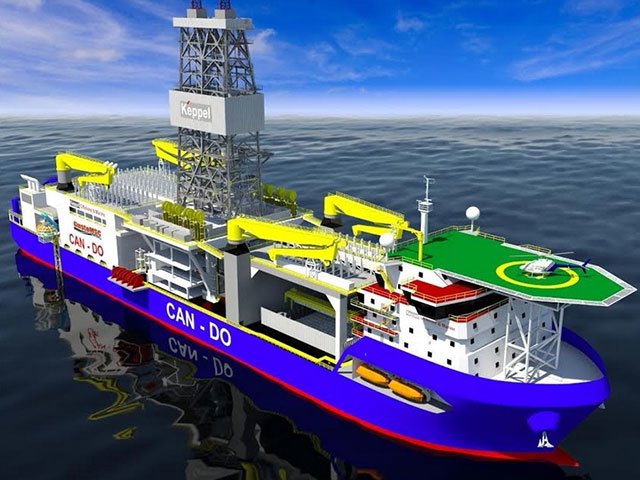
Keppel FELS has decided to press ahead with construction of the first Can Do class drillship on spec.
When completed in 2016, this innovative design is expected to plug a gap in the drilling marketplace in that it has been designed to be equally at home in the development work as exploration and appraisal activities.
Jointly developed by Keppel Offshore & Marine Technology Centre (KOMtech), the R&D arm of Keppel O&M, and its design partner GustoMSC, the Can Do has also been developed to overcome the constraints of the apparently limited deck space found in most modern day drillships.
GustoMSC has an extensive track record of designing mobile offshore drilling units and in particular drillships of which to date 43 units have been or are being built to the company’s designs.
They range from the Pelican class to the P10,000. The Cad Do’s design is said to take account of feedback from both oil companies and drilling contractors.
“As with all our market established proprietary designs, our new Can Do drillship design was developed in close consultation with customers, major oil companies and vendors,” said Mr. Chow Yew Yuen, COO and CEO-designate at Keppel O&M.
“The newly-developed design is capable of handling next generation 20,000psi (pounds per square inch) blowout preventers.
“While most modern drillships currently in operation were designed and built for exploration drilling, industry feedback has revealed the need for vessels capable of performing development and completion drilling in addition to exploration drilling.
“Since the launch of our design (early last year), we have received very encouraging response from the market, and we have decided to start constructing the first drillship to this design.
“We believe the drillship meets the high functionality, safety and cost-effective requirements of the industry.”
Apart from incorporating exploration drilling requirements, Keppel says the design makes ample provision for the installation of the third-party equipment invariably required for development and completion drilling through the incorporation of a large functional deck space and a variable loading capability of 36,000 tonnes.
It will be capable of drilling in water depths to 3,658m (12,000ft). The design has a riser hold capacity to cope with 22.86m (70ft) or 39.47m well riser sections. Two 20,000psi blow-out preventers are specified.
The drillship has been model tested at the Marin facility in the Netherlands and has also obtained class approval for the basic design. A full 3D model has been created for construction purposes.
Recommended for you
